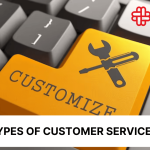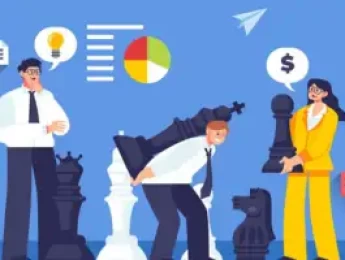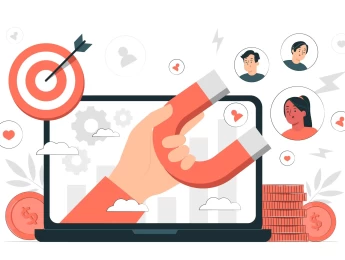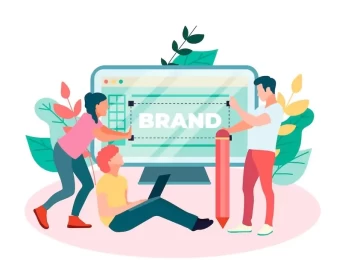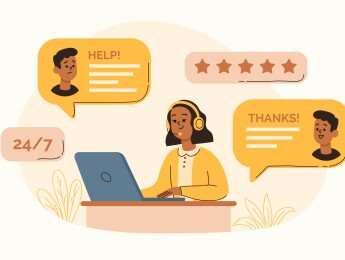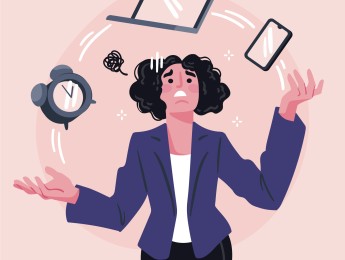Brand loyalty is essential for a successful business. It means that your customers are completely satisfied with your offer and will continue returning to your company to purchase again. If a customer receives great service, they’re also likely to tell other people they know that you’ve done a great job or even leave good reviews online or on social media, which is a great way of achieving organic marketing.
To ensure you continue to increase brand loyalty and keep customers coming through your doors, you need to focus company-wide on customer satisfaction. To achieve this, you should involve every person in your business and emphasise the importance of good customer service. Even those people who aren’t typically customer-facing will need to understand their role in the customer journey.
Customer journey mapping is an excellent way to increase brand loyalty. Looking back on past pain points and revisiting the customer's journey through your service is a great way to pick out areas where your service needs improvement. Handling the smaller points and making strategic changes could be the difference between a negative review and a positive one.
It’s also important to rectify customer complaints well. Things go wrong in every service, but if your team, from top to bottom, understands how to resolve a complaint properly, then that customer may even commend you for your dedication to their needs. Creating a customer focus throughout your business is the best way to achieve brand loyalty.
Upon completion of this course, participants will be able to:
- Improve your brand loyalty by creating a company-wide focus on customer service.
- Create effective customer journey maps to identify pain points in your processes.
- Develop strategic project plans to aim for continuous improvement.
- Create loyalty schemes to generate customer interest.
- To understand customer segmentation and offer what your customers want.
- Train your employees from the top down to consider the customer journey in everything they do.
- Focus on customer interaction and offer different methods of contact based on their needs.
- Reach out to customers for feedback to help improve your brand for the future.
This course is designed for anyone who is responsible for the continuous improvement of the customer journey within a company or needs to create valuable project plans focused on customer satisfaction. It would be most beneficial for:
- Business Owners
- Directors
- Executives
- IT Personnel
- Operations Managers
- Team Leaders
- Project Planners
- Change and Control Managers
- Frontline Customer Service Teams
This course uses a variety of adult learning styles to aid understanding and comprehension. Participants will watch videos to understand the impacts of good and bad customer service and how these affect brand loyalty. Group discussions and activities will allow participants to create innovative loyalty schemes to encourage more conversion and develop appropriate methods of tracking and monitoring these schemes to develop a customer segmentation matrix.
Role-playing activities will also be implemented to review communication styles against the customer journey and identify pain points where changes should be made to develop more positive customer satisfaction survey results.
Day 5 of each course is reserved for a Q&A session, which may occur off-site. For 10-day courses, this also applies to day 10
Section 1: Why is Brand Loyalty Important?
- Return and churn philosophy.
- Delight and inspire your customers.
- Achieving positive feedback.
- The most effective marketing strategy.
- Understanding the brand value and your customer base.
Section 2: Brand Loyalty & Loyalty Measurements
- Understanding the different types of customers.
- How do you measure loyalty?
- Generating a loyalty index.
- Your customers’ average expectancy.
Section 3: Customer Rewards Against Profit Margins
- Rewards schemes that stay within budget.
- Gamification of purchases and website activity.
- Generally Accepted Accounting Principles (GAAP).
- Activity-Based Costing.
- How much profit can you expect from each customer?
- Your whale curve charts.
- Creating a valid strategy to meet your aims.
Section 4: Asking Your Customers for Feedback
- Understanding your customers’ expectations.
- Training out customer focus throughout the company.
- Customer satisfaction questionnaires.
- Utilising different modes of contact.
- Transactional-based questionnaires
- Qualitative vs. quantitative data.
Section 5: Handling Difficult Customers & Managing Expectations
- Exceeding customers’ expectations.
- Taking on feedback and generating a valuable action plan.
- Maximising your value.
- Monitoring the results of change.
- Assessing risk elements and reworking the framework.
- Ongoing evaluation planning.
Upon successful completion of this training course, delegates will be awarded a Holistique Training Certificate of Completion. For those who attend and complete the online training course, a Holistique Training e-Certificate will be provided.
Holistique Training Certificates are accredited by the British Assessment Council (BAC) and The CPD Certification Service (CPD), and are certified under ISO 9001, ISO 21001, and ISO 29993 standards.
CPD credits for this course are granted by our Certificates and will be reflected on the Holistique Training Certificate of Completion. In accordance with the standards of The CPD Certification Service, one CPD credit is awarded per hour of course attendance. A maximum of 50 CPD credits can be claimed for any single course we currently offer.
- Course Code PM2-110
- Course Format Classroom, Online,
- Duration 5 days


